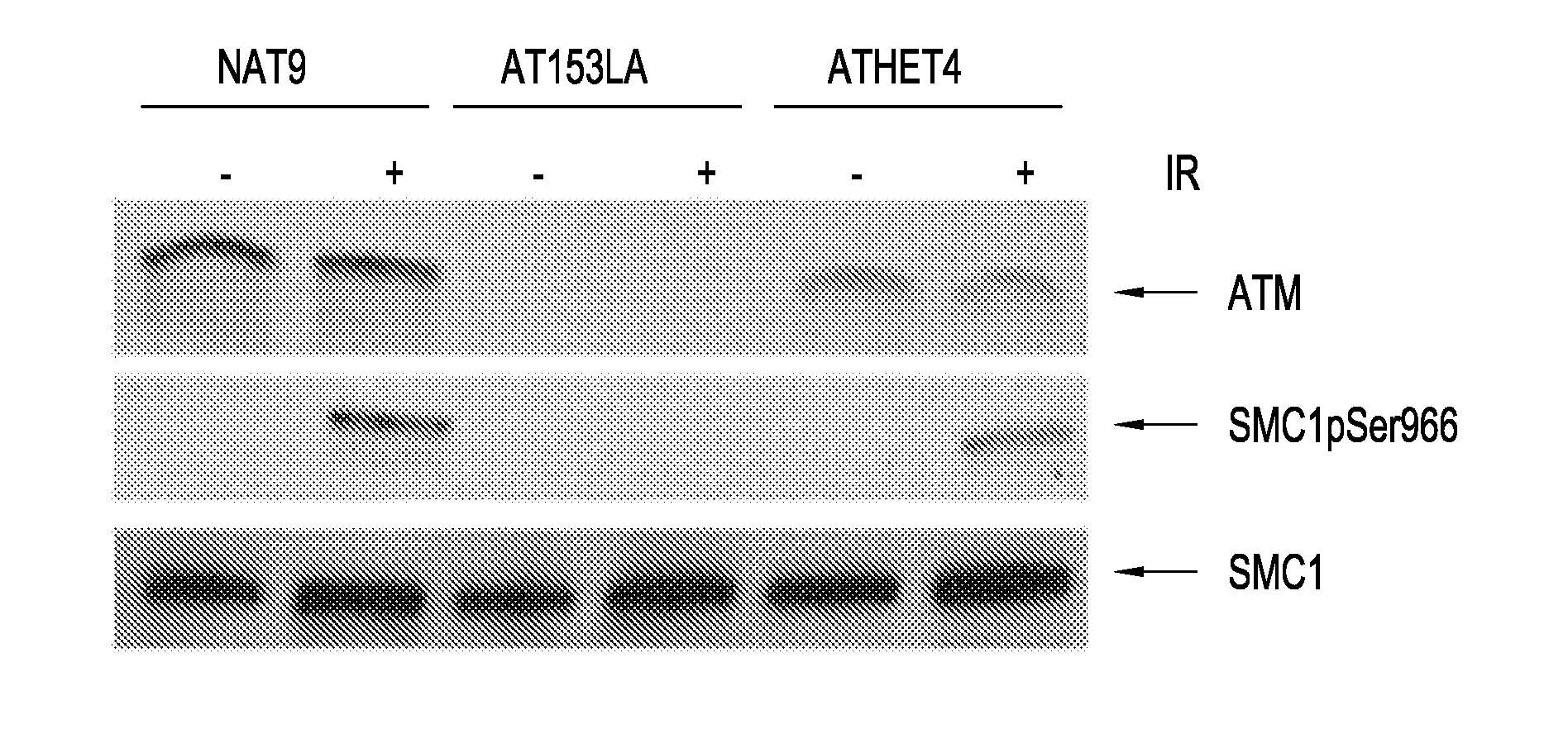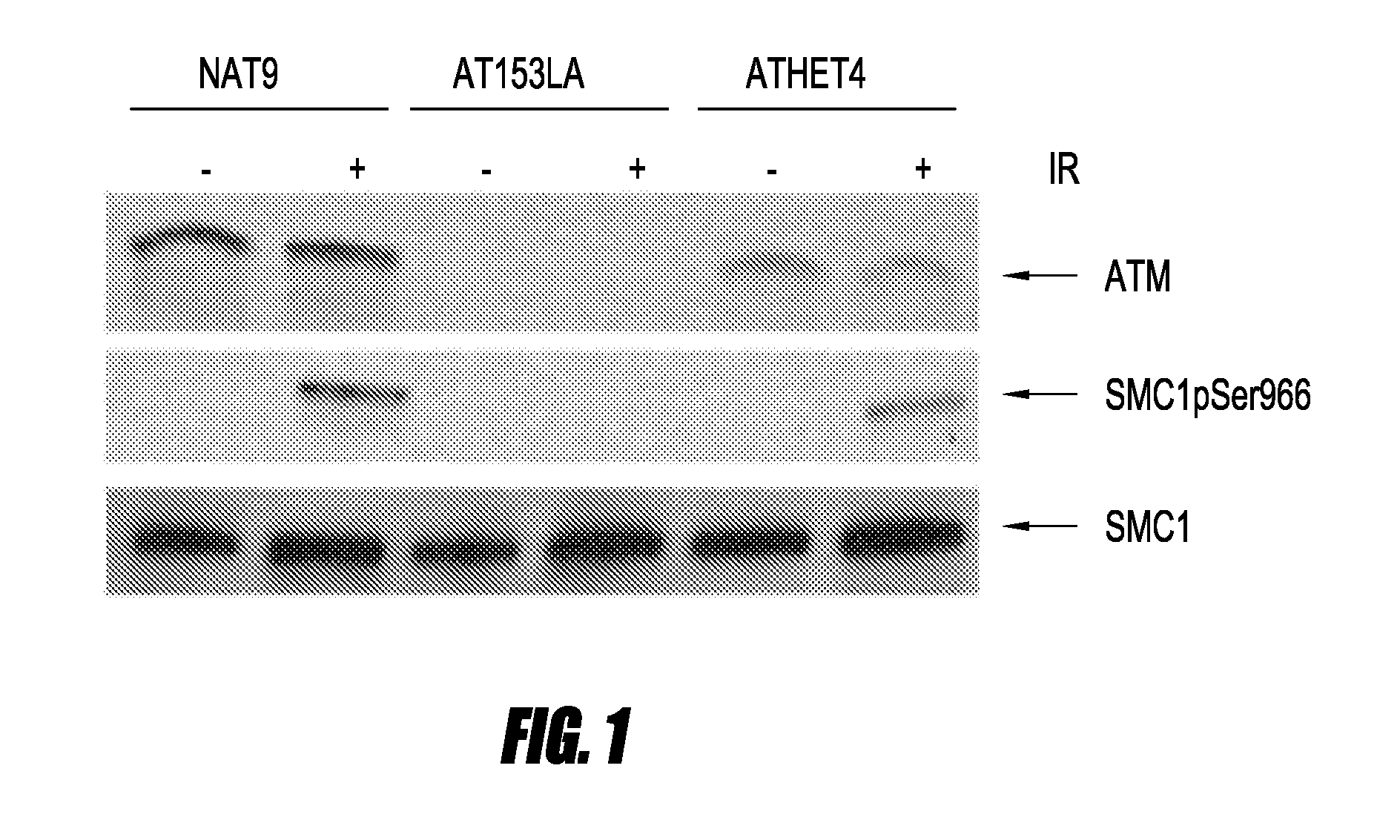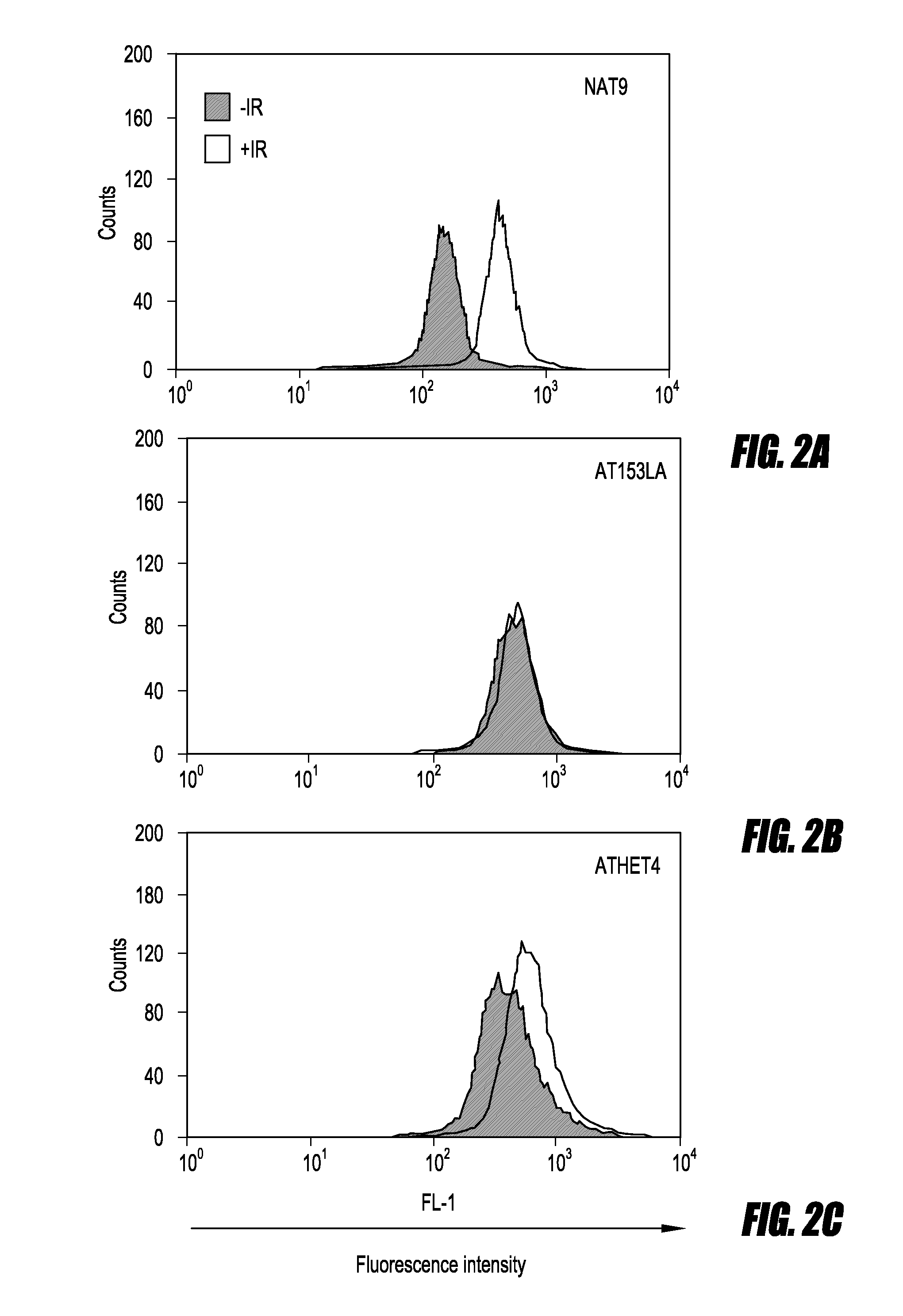Rapid assay for detecting ataxia-telangiectasia homozygotes and heterozygotes
a technology of ataxia-telangiectasia and assays, applied in the field of assays for identifying ataxia-telangiectasia homozygotes and heterozygotes, can solve the problems of exhibiting adverse health effects, laborious and laborious, and a long turnaround time, and fresh blood cells do not allow a reliable diagnosis of heterozygosity
- Summary
- Abstract
- Description
- Claims
- Application Information
AI Technical Summary
Problems solved by technology
Method used
Image
Examples
example 1
[0048]After informed consent, blood was collected from 7 normal daily controls, 16 healthy volunteers (unknowns), 10 obligate heterozygotes, and 6 unrelated A-T patients, into 10 mL tubes containing sodium heparin (Becton Dickinson Vacutainer Systems). Peripheral blood mononuclear cells (PBMCs) were isolated by centrifugation over a Ficoll-Hypaque density gradient (Amersham Pharmacia Biosciences). Mononuclear cells were transformed with Epstein-Barr virus and maintained at 37° C. and 5% CO2 in RPMI 1640 (Gibco Invitrogen) containing 15% heat-inactivated fetal bovine serum (Hyclone) and 1% penicillin / streptomycin (Gibco Invitrogen). ATM mutations for the A-T patients studied are listed in Table 1.
TABLE 1ATM mutations for the A-T patients studiedATLA#Cell TypeMutation AMutation BAT203LALCL901G > A (Splicing Type I)IVS28-159A > G (Splicing type II)AT153LALCL8977C > T (Nonsense)8977C > T (Nonsense)AT227LALCLND (not determined)NDL3LCL103C > T (Nonsense)103C > T (Nonsense)...
example 2
FC-pSMC1 Assay
[0049]PBMCs or LCLs were suspended in PBS and split into two aliquots. To produce DNA damage, the cells in one aliquot were irradiated (10 Gy) or treated with 1.5 μg / mL bleomycin. The cells were then incubated at 37° C. in 5% CO2 for 1 hour, at which time they were fixed and permeabilized using Fix&Perm cell permeabilization kit (Caltag Laboratories; Invitrogen). Briefly, 100 μL fixation reagent A was used to resuspend, vortex-mix, and hold the cells for 3 minutes at room temperature, followed by the addition of 3 mL cold methanol. The methanol was added during vortex-mixing. The cells were incubated at 4° C. for 10 minutes and centrifuged at 300 g for 5 minutes. After centrifugation, the supernatants were removed and the cells were washed with 3 mL PBS plus 0.1% sodium azide and 5% fetal bovine serum, followed by centrifugation for 5 minutes at 300 g. We resuspended the cells in 100 μL permeabilization reagent B, added 5 μg rabbit anti-SMC1pSer966 antibody (it is an a...
example 3
Detection of ATM Kinase Activity by SMC1 Phosphorylation, Using LCLs
[0051]LCLs were suspended in PBS and split into two aliquots. To produce DNA damage, the cells in one aliquot were irradiated with 10 Gy.
1. Detection of ATM Kinase Activity by Immunoblotting
[0052]Nuclear extracts from 5-10 million LCLs were prepared following the manufacturer's protocol (NE-PER Nuclear and Cytoplasmic Extraction Reagents, Pierce, Rockford, Ill.). Nuclear lysate (25 μg) was electrophoresed on a 7.5% SDS polyacrylamide gel (PAGE), transferred onto polyvinylidene difluoride (PVDF) membrane (Bio-Rad, Hercules, Calif.), blocked with 5% milk, and incubated with a 1:1000 dilution of rabbit anti-SMC1pSER966, rabbit anti-SMC1, or rabbit anti-ATM (Novus Littleton, Colo.) overnight at 4° C. Horseradish peroxidase-conjugated Ig anti-rabbit antibody was added at a dilution of 1:3000 and incubated at room temperature for 40 minutes. All proteins were detected using an enhanced chemiluminescence kit (Amersham Phar...
PUM
| Property | Measurement | Unit |
|---|---|---|
| Volume | aaaaa | aaaaa |
| Fraction | aaaaa | aaaaa |
| Fraction | aaaaa | aaaaa |
Abstract
Description
Claims
Application Information
 Login to View More
Login to View More - R&D
- Intellectual Property
- Life Sciences
- Materials
- Tech Scout
- Unparalleled Data Quality
- Higher Quality Content
- 60% Fewer Hallucinations
Browse by: Latest US Patents, China's latest patents, Technical Efficacy Thesaurus, Application Domain, Technology Topic, Popular Technical Reports.
© 2025 PatSnap. All rights reserved.Legal|Privacy policy|Modern Slavery Act Transparency Statement|Sitemap|About US| Contact US: help@patsnap.com



